At Big Chalk, we believe chalk and limestone landscapes are more than just habitats. They are living spaces where nature, culture, and community come together. Luton Henge, created by artist Matt Rosier, perfectly embodies that vision. Recognised as an approved Big Chalk project, it celebrates our shared heritage, sparks connection, and inspires action for nature’s recovery.
In this guest blog, Matt takes us behind the scenes of Luton Henge, sharing the story, ideas, and inspirations that brought this unique project to life.
The Last Chalk
Thousands of years ago people came together from across the chalk landscape of the Chilterns to create a giant earthwork to mark the source of the River Lea – Waulud’s Bank. 5,000 or so years later, with dozens of collaborators and volunteers, we’ve created the latest iteration to this sacred site.
Luton Henge consists of eight chalk ‘clunch’ standing stones, the last ever to be sourced from Totternhoe Quarry, surrounding a hammered chalk centre circle and ceremonial path, eight charred wooden benches and an (in-process) rewilded chalk grassland meadow. It sits within a modified BMX track (our ready made earthwork) which remains open.
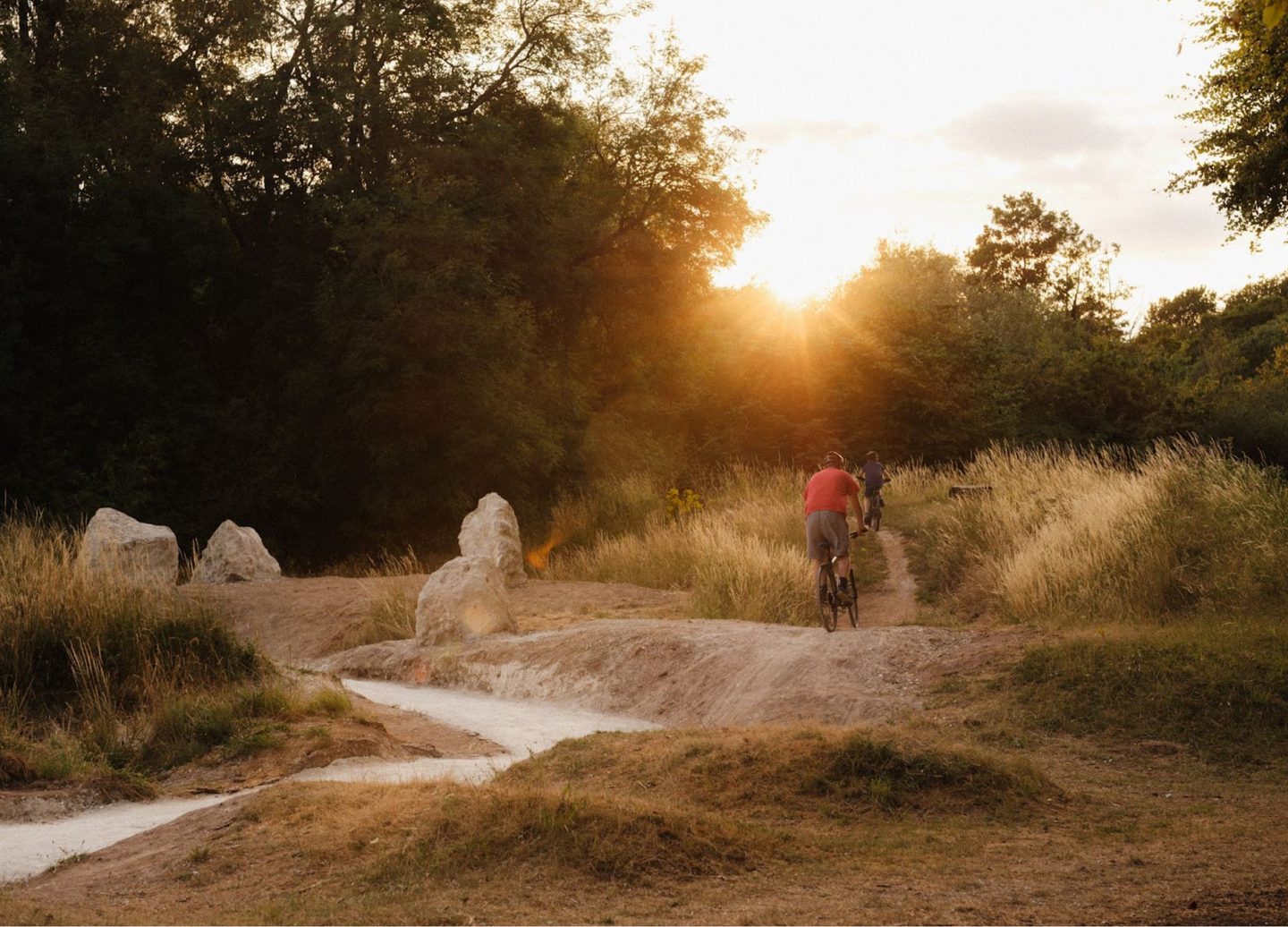
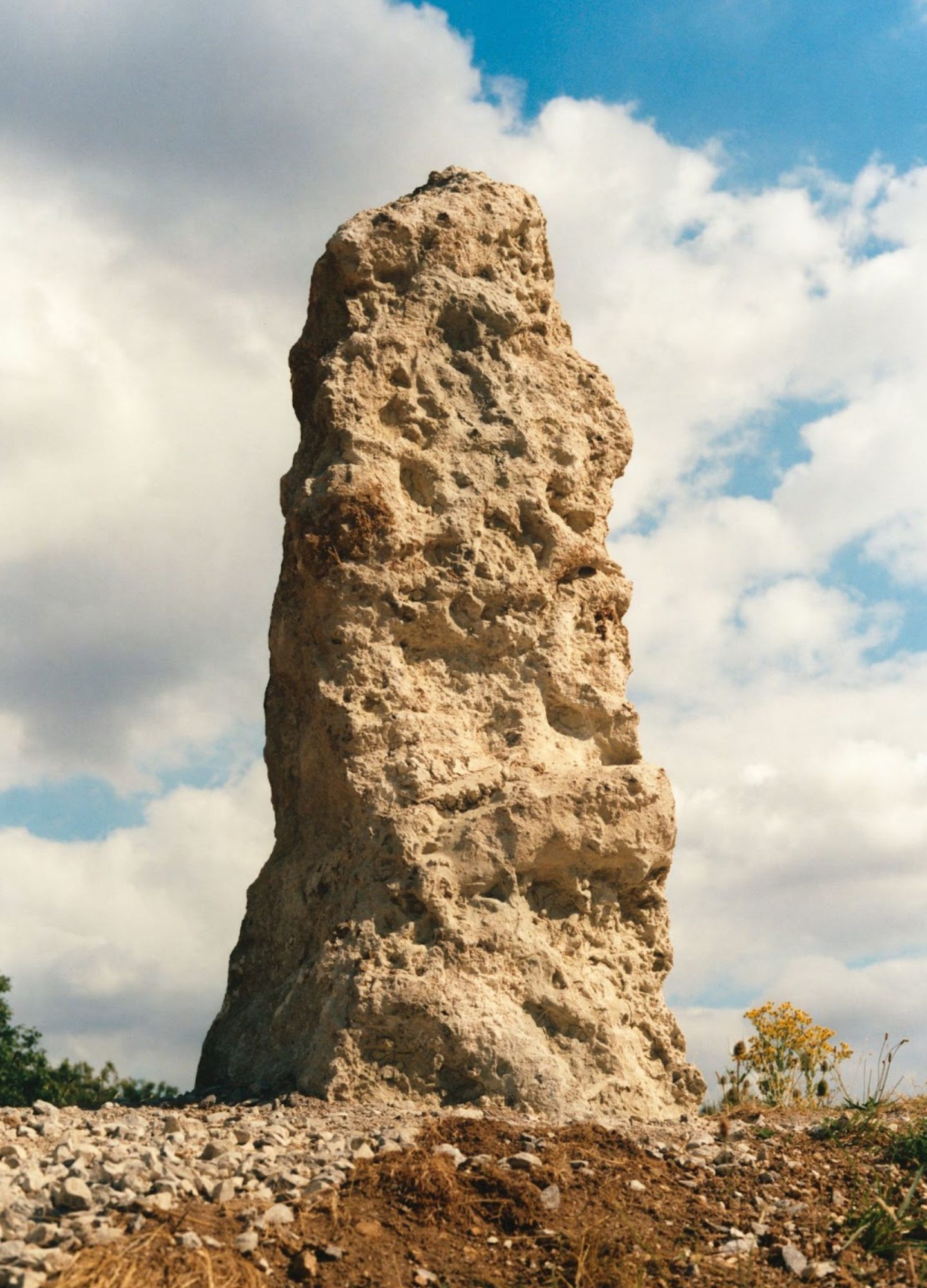
The point was to echo the process that brought people together to make something in the landscape thousands of years ago. Doing this in 2025 involves significantly more bureaucracy (I didn’t expect my first planning app to be a Henge). Though diggers and trucks make it significantly quicker to build!
This abundant, usefully placed, chalk landscape has been a place where people have settled for millennia. Luton exemplifies this. A place where people from different places and cultures have settled to build lives together.
The universality of a stone circle, appearing in almost every continent, was an intentional choice. A space onto which people could project their own identities, hopes, ideas. An elderly man recently remarked to my colleague the chalk stones remind him of the glowing Kashmiri mountains of home.
Prior to this project, I knew very little about chalk. Ten months later, I’d be covered in the stuff. After the three week build in June, my hairdresser asked why my hair was so incredibly dry – ”dust”, I said.
The Big Chalk conference was my introduction to chalk landscapes. I quickly realised how chalk defines so much of all we love in this landscape, and many others across England. Its meadows, trees, wildlife, rivers, hills – its inhabitants.
In the Chilterns, chalk is the source of this plentiful and alluring landscape. This is why I wanted to use forms of chalk to make this Henge. A connecting material between distant, current and future occupants of this landscape.
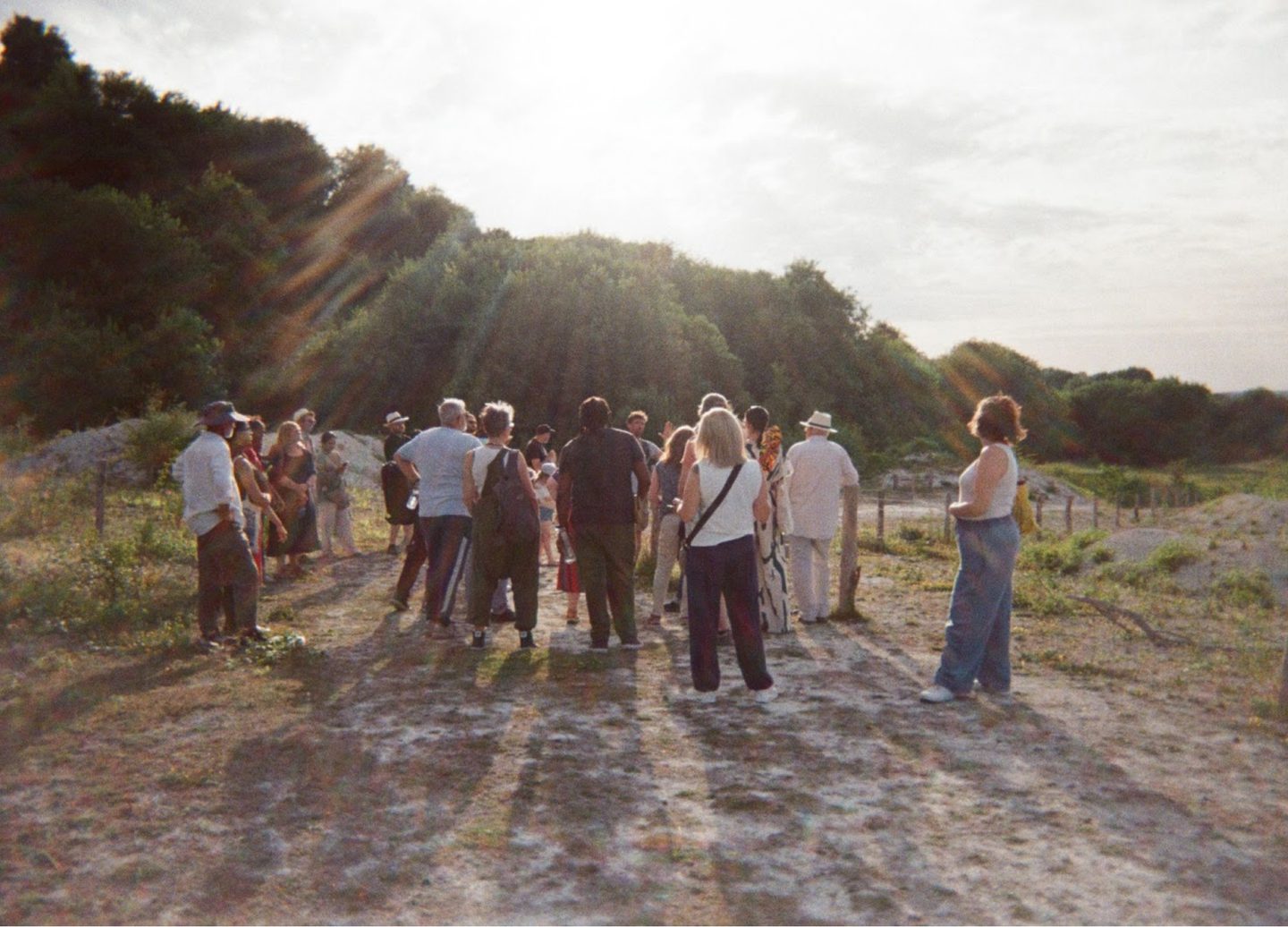
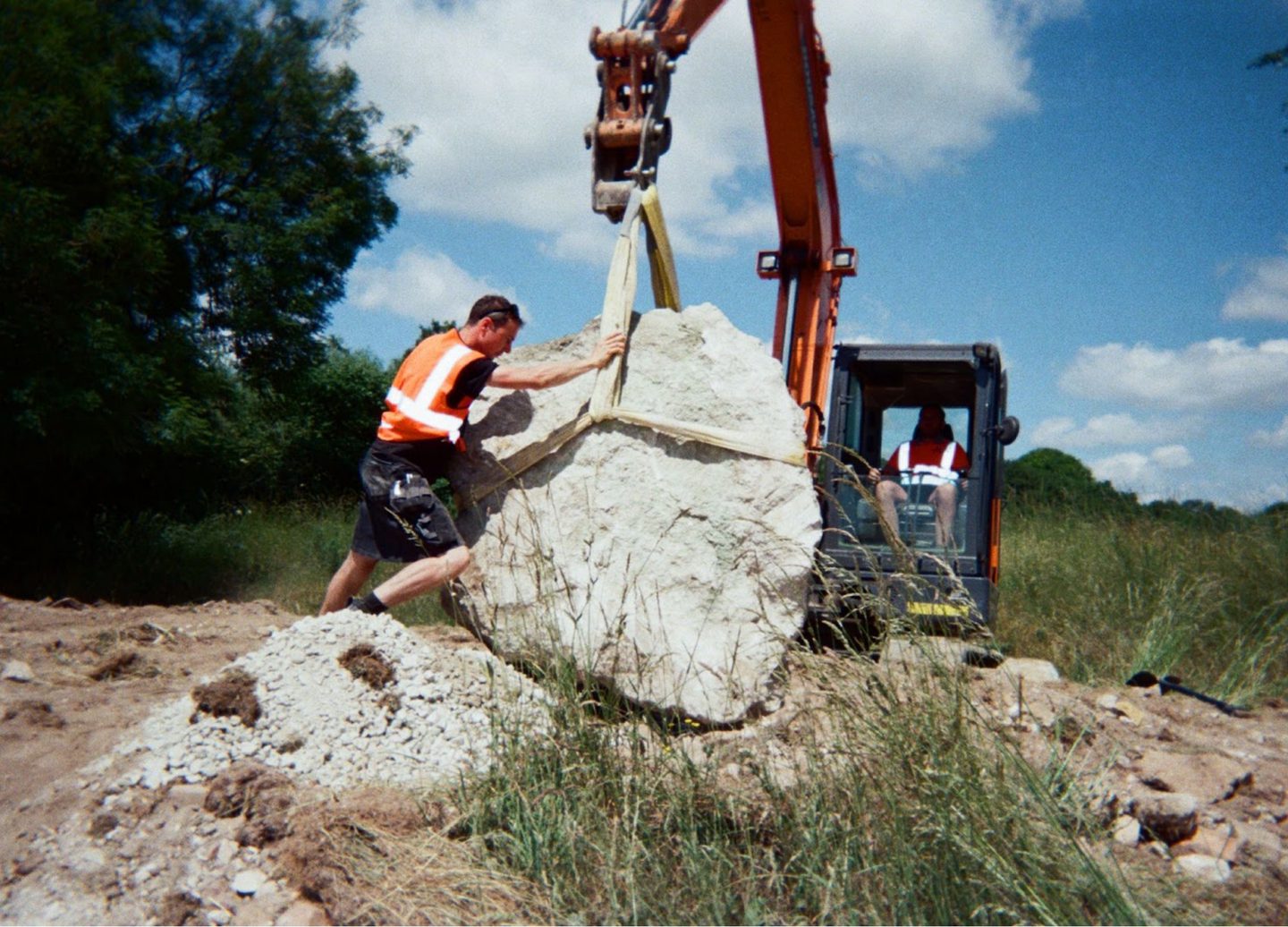
As I got to know the archaeology of the Chilterns better, I was excited to learn that its barrows (ancient burial mounds) may actually have glowed bright white in the moonlight – with the turf taken off to reveal the chalk laying just below. This inspired the chalk centre circle and pathway of our Henge.
Visiting Totternhoe Quarry for the first time I was amazed to discover there was a form of chalk that was durable enough to be used in building. Extracted from the deepest layer of the lost seabed, ‘Totternhoe Clunch’ is a rare form of chalk, mixed with minerals and fossils, which holds together like stone. For this reason it has been used in some of the country’s most important buildings, including Westminster Abbey.
It had been quarried here since Roman times. Its most recent quarriers, Clark Contracting, had retired a few years ago – with the site now given back to nature under the management of the Wildlife Trust. Having seen several large stones laying around, some with incredible fossilised textures, I knew we had found our standing stones.
From start to finish, this project was about cultivating community. Beginning with walks in the landscape, through to rituals, gatherings, building workshops and an opening festival. A ‘Henge Collective’ was formed, of local volunteers who will guide the future care and use of the space.
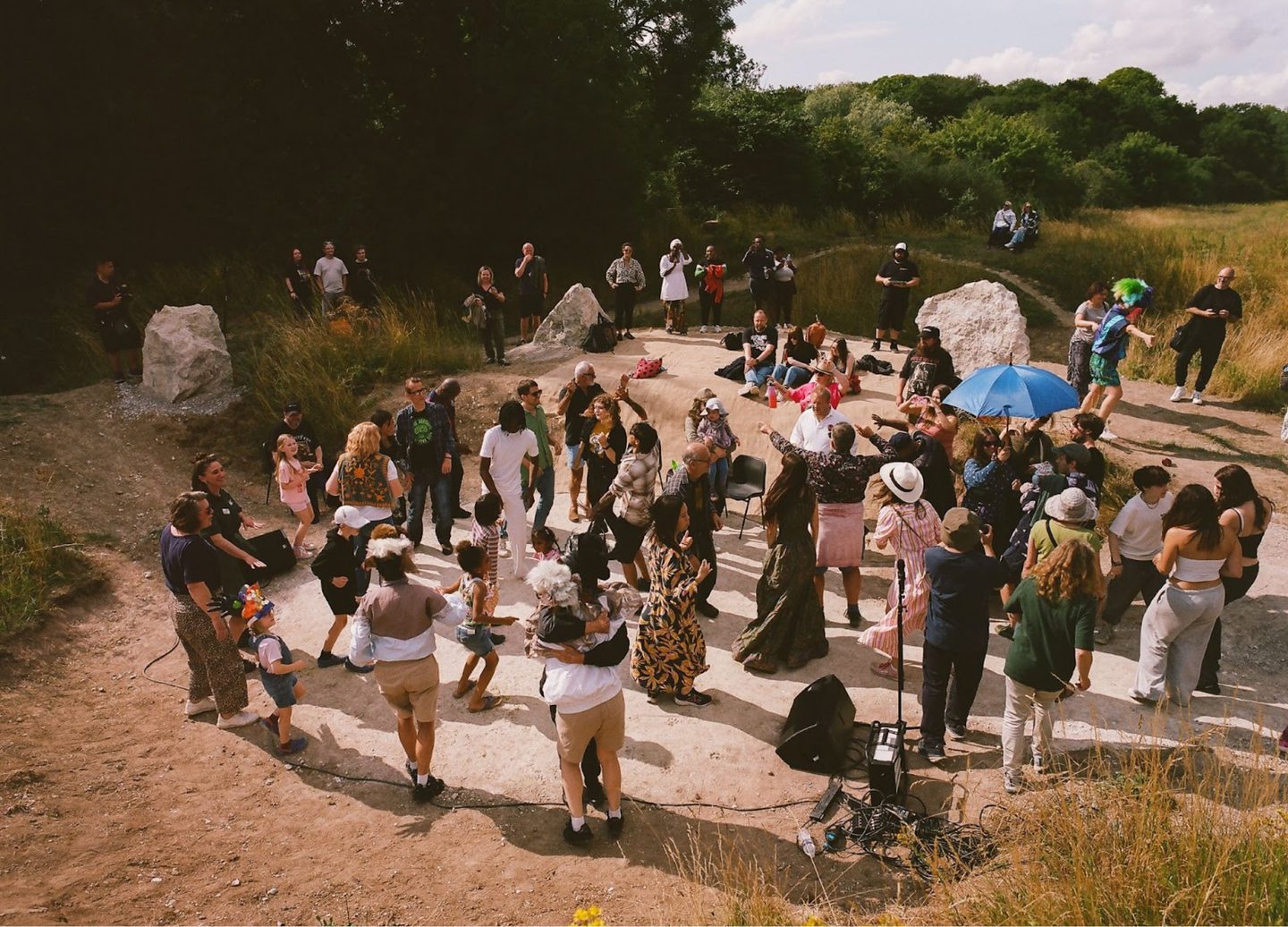
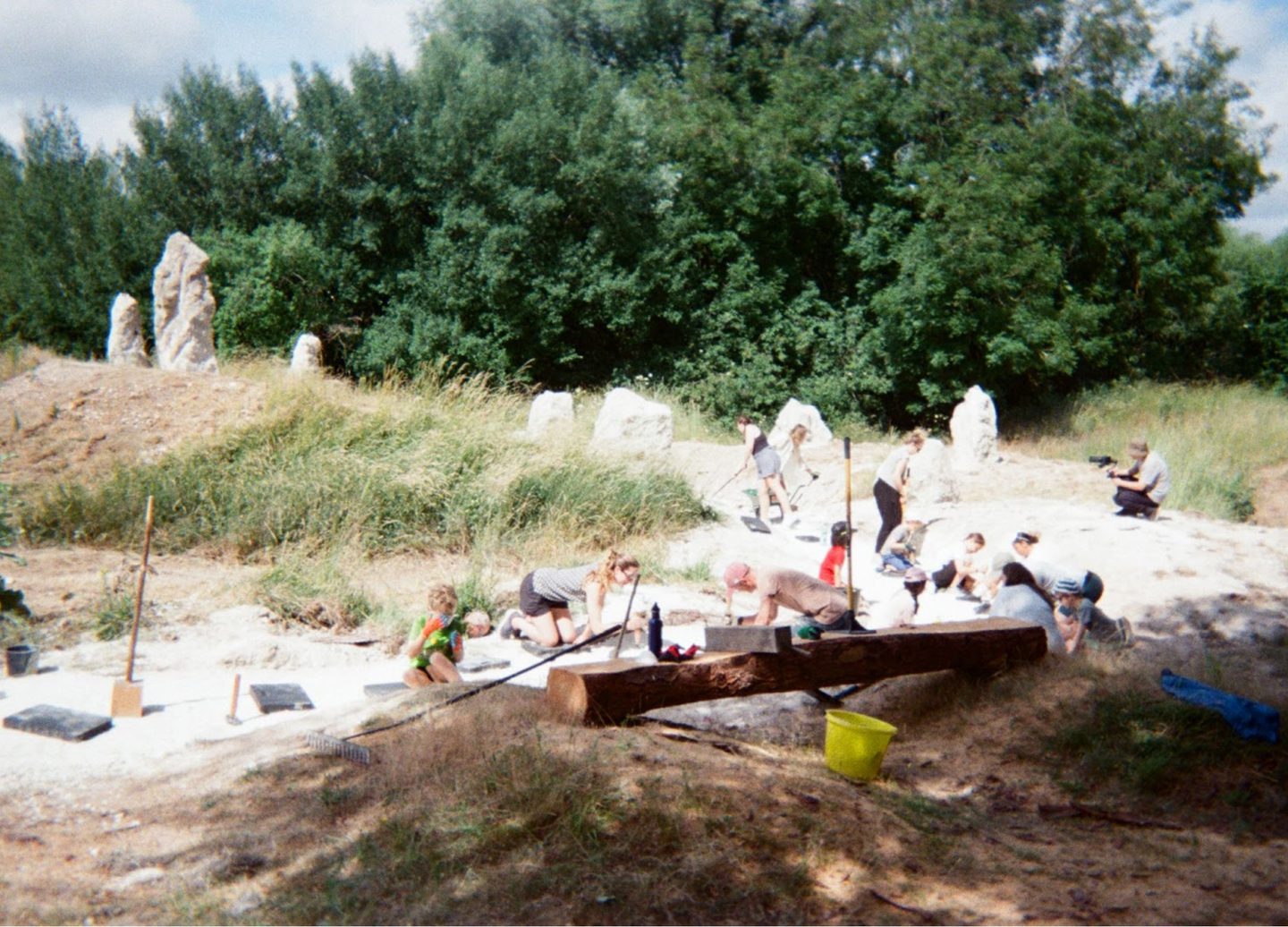
As with Waulud’s Bank thousands of years ago, it was important people came together to physically build the Henge and leave their mark. Well over 1,000 volunteer hours went into its making, which was led and facilitated by architecture studio Common Practice.
The ‘chalk packing’ day was a particularly special moment in the community creation of the Henge. Mirroring a process that has existed for millenia, where loose chalk is hammered into the ground by many hands, dozens of volunteers braved a heatwave to make their mark. The sound of many hammers striking the chalk at once was hypnotic (or perhaps I was dehydrated).
Chalk is such a playful and welcoming material. Easily shaped, smashed and moulded by human hands. Irresistible as a mark making tool. Within a day of the fences around the Henge coming down there were chalk drawings on the surrounding pavement, and on the charred wooden benches. As I’m sure neolithic children would have too.
Through this project I learnt why chalk grassland meadows thrive under certain conditions. Our Henge site, a repurposed BMX track, was made of rubble which turned out to be the perfect substrate for such a habitat. Already native wildflowers had taken root.
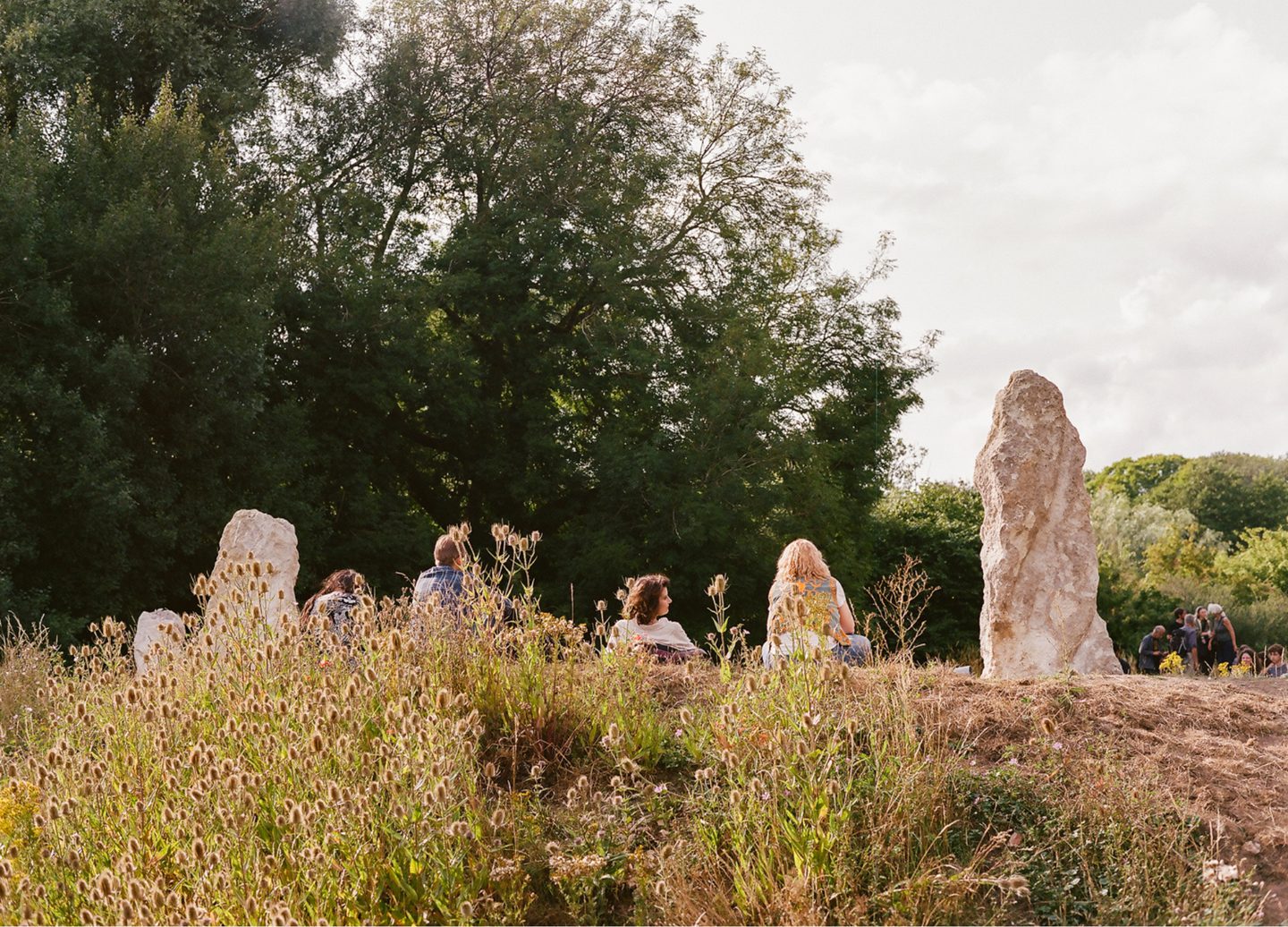
There is now a management plan in place to establish the whole site as a chalk meadow. With seeds from the neighbouring Waulud’s Bank to be spread on the site in the Autumn, and cut grass raked off to ensure the site stays nutrient poor.
The intention of this project from the start was to create a connection between this very urban area of Luton and the wider Chilterns landscape. Which feel like different worlds, when they shouldn’t. We created this connection by bringing materials, processes, knowledge embedded in the chalk landscape surrounding Luton, and then working with the local community to create a new space to relax, gather and celebrate together.
In a world that feels increasingly disconnected, complicated and unjust – the simplicity of coming together in a stone circle felt quietly radical. As did the centring of chalk within that space, a material entirely taken for granted, but so central in the story and future of our landscape.
— Matt Rosier
Credits
Luton Henge created by Matthew Rosier as part of the Nature Calling programme is presented by Revoluton Arts, commissioned by the Chilterns National Landscape in partnership with the National Landscapes Association, Activate Performing Arts and the Poetry School. The project is funded by Arts Council England and the Department for Environment, Food and Rural Affairs (Defra).
Join our partnership
Realising our vision depends on building a broad, representative partnership – we do together what we cannot do alone.
If you would like to discuss joining the Big Chalk Partnership, please email David Hoccom.
Register your project
The Big Chalk programme is made up of a dynamic and evolving suite of partner-led projects. These may do different things, cover different areas and have different partners but they all have two things in common – they contribute towards delivering the Big Chalk vision and the Big Chalk Board has agreed they can be registered as a Big Chalk Project.
Once registered, a Big Chalk Project can use the Big Chalk brand on its materials, benefiting from an enhanced profile as well as access to networking, shared learning and best practice. Importantly, Big Chalk Projects are recognised as being part of a collective effort to secure the future of nature in southern England’s iconic chalk and limestone landscapes.
The registration process begins with submission of an online form.
Join a topic group
Knowledge transfer within the Big Chalk Partnership happens through a series of topic groups, which meet online three to four times a year. These currently cover:
- Land management for nature’s recovery
- Working with farmers and land managers
- Developing landscape-scale programmes
- Local nature recovery strategies
- Evidence, data and recording
- Natural capital
- Health, wellbeing & engagement
If you are interested in joining a Big Chalk topic group, please email Bruce Winney.
Become a funder or partner
We would love to hear from you if your organisation can help fulfil our mission and contribute to delivering our vision of nature-rich chalk and limestone landscapes that benefit all of us.
If you would like to discuss funding or partnering with Big Chalk, please email David Hoccom.
